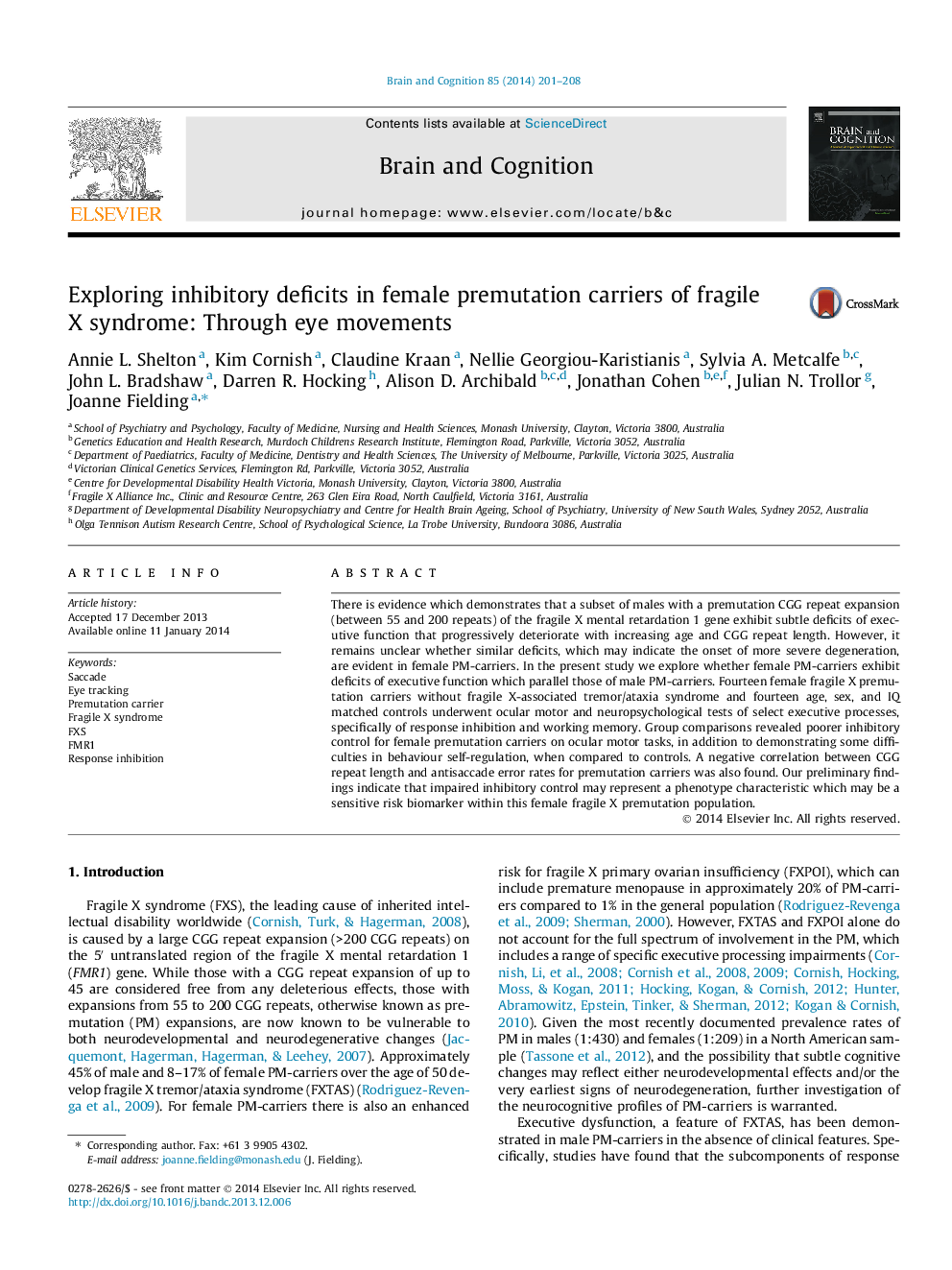| Article ID | Journal | Published Year | Pages | File Type |
|---|---|---|---|---|
| 924302 | Brain and Cognition | 2014 | 8 Pages |
•Similar behavioural self-regulation profile found in female PM-carriers as males.•Female PM-carriers committed more inhibitory errors than controls.•Equivalent saccade profiles for PM-carriers and controls.•Negative correlation between CGG genetic data and inhibitory errors.
There is evidence which demonstrates that a subset of males with a premutation CGG repeat expansion (between 55 and 200 repeats) of the fragile X mental retardation 1 gene exhibit subtle deficits of executive function that progressively deteriorate with increasing age and CGG repeat length. However, it remains unclear whether similar deficits, which may indicate the onset of more severe degeneration, are evident in female PM-carriers. In the present study we explore whether female PM-carriers exhibit deficits of executive function which parallel those of male PM-carriers. Fourteen female fragile X premutation carriers without fragile X-associated tremor/ataxia syndrome and fourteen age, sex, and IQ matched controls underwent ocular motor and neuropsychological tests of select executive processes, specifically of response inhibition and working memory. Group comparisons revealed poorer inhibitory control for female premutation carriers on ocular motor tasks, in addition to demonstrating some difficulties in behaviour self-regulation, when compared to controls. A negative correlation between CGG repeat length and antisaccade error rates for premutation carriers was also found. Our preliminary findings indicate that impaired inhibitory control may represent a phenotype characteristic which may be a sensitive risk biomarker within this female fragile X premutation population.
